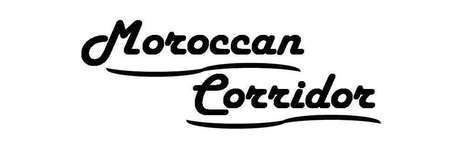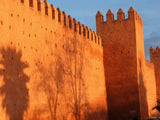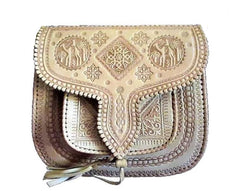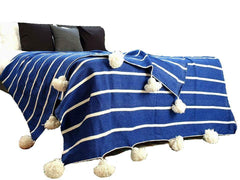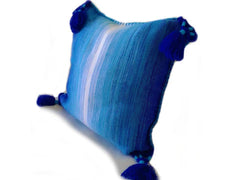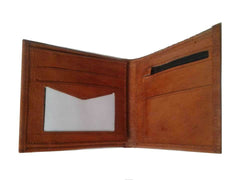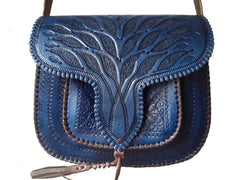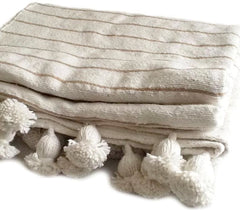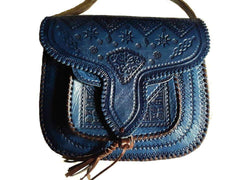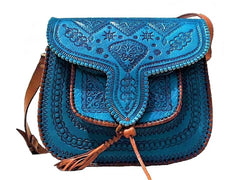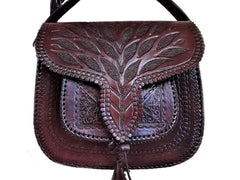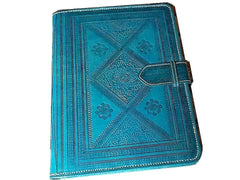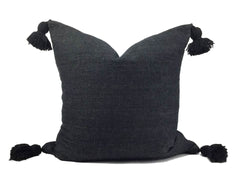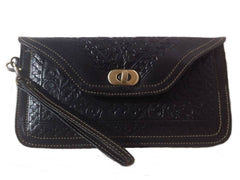Between the embrace of the eastern protrusion of the Middle Atlas mountain range, the Beni Ouarain tribes, famous for their traditional weaving, do not hesitate to add elegance and beauty to the Moroccan traditional industry rooted in the history and civilization of the Moroccan Kingdom.
Thus, the Beni Ouarain rug is considered the pure product of this traditional fabric woven with the fingers of a group of weavers, who skillfully mix threads to make one of the most delicate types of rugs, which take sheep as a primary source of wool.
The history of Beni Ouarain rugs
The Beni Ourain tribe is a large Berber tribe that settled long ago in the northeast of the Middle Atlas Mountains. According to some historians, the origins of this tribe descend from the Zanata tribe, which was settled in the Fiquik region in the southeast of the Moroccan Kingdom. Although most of the inhabitants of the Beni Ouarain tribe reside in the province of Taza, this tribe has an extension in three other provinces, which are Guercif, Sefrou and Pullman. And it is possible to determine the geographical area of the Bani Warain tribe between Mount Boybalan in the south, Mount Tazka in the north, and between Wadi Enaun in the west and Wadi Amson in the east. Buibalin, which is more than 30,333 meters high, is covered with snow until the end of spring.
All these factors forced the inhabitants of the Beni Ouarain tribe to subsistence farming, especially the raising of sheep and goats. The harsh weather, especially the harsh cold, prompted the inhabitants of this tribe to exploit the availability of wool and lint to manufacture textiles with which they confront the harshness of nature. Among the most important of these textiles is the tapestry named after this tribe, whose fame exceeded the borders of the country, in addition to the handira, which is a type of women's clothing made of wool and worn by the Berber bride.
Beni Ouarain Rug: Making Process
The Rug/Carpet sector is considered one of the main pillars of the traditional industry in Morocco, not only in its cultural, civilizational and artistic aspects, but also in its economic aspect, and the carpets of Bani Ourain are a model of the traditional industry that still maintains its glow over time.
The weaving craft of the Beni Ouarain tribe strikes its roots in history and is in harmony with the environmental and geographical environment of the region, especially the cold weather in winter and the snow that adorns the peaks of the Puebaln and Tazca mountains for a long time.
The Beni Ouarain rug is made of white and black woolen threads that are extracted from the wool of sheep available in the region or from manufactured threads that are brought from the cities of Fez and Salé, and the latter are of different colors.
In preparation for the weaving process, careful and painstaking effort must be made to wash the wool, choose the colors and dyes, and spin the woolen threads, by craftswomen who choose to engage in this income-generating activity.
The process of making handmade carpets generally goes through several stages, which are:
1- Shearing the wool from live sheep, whether manually using a knife or scissors, or by using a special shearing machine, and the appropriate period for carrying out this process is the spring season.
Choosing the right kind of wool is a complicated task for these women, who have to find the right flock, by shearing its wool and then combing it before joining the cooperative.
2- Washing and drying the wool.
3- Combing the wool, and in this process a tool called the qirshal, qirdash, or comb is used.
4- Wool spinning, which is the process that converts wool into threads that facilitate the weaving process, and this process is done with a tool called a spindle.
5- Dyeing wool, which is the process of coloring and is done with natural plant materials available in the region (saffron, grape leaves, pomegranate bark, walnut bark, henna, kohl...) or by using industrial chemicals.
6- Wrapping colored wool to facilitate the weaving process.
7- The use of the weave, which consists of two frames facing each other horizontally (the loom) and others vertically (the rameh). the scissors...

If the process of making a Beni Ouarain rug is not much different from the method of making other handmade rugs, then what distinguishes this rug is the method of tightening the knot and the accuracy in designing the geometric shapes that are drawn on it and the colors used as well, especially those distinctive black and white dots.
The geometric design of the Beni Ouarain rug has changed over time, affected by several factors, the most important of which are the colonial influence, modernization and cultural exchange, where a group of new geometric shapes and symbols were introduced.
A piece of the soul of Morocco
Beni Ouarain rug production
In workshops or at home, the “Beni Ouarain rug makers” in Guercif, using weaving combs that are locally called “taztasha”, try to create drawings and geometric designs such as squares and lozenges, mediating the white wool forming wonderful artistic paintings.
Individually or collectively, the “teachers” in Guercif unleash their imagination to make traditional pieces, using various geometric shapes and symbols that come from the heritage of their ancestors. Moving back and forth or sitting in front of a tightly taut vertical loom with two frames on the sides to constrain the size of the carpet, the carpet makers in Beni Ouarain open the thread spools to then tighten the warp and weft threads before weaving.
Most of the workshops for the Beni Ouarain rug industry are located inside homes, despite the establishment of some cooperatives and craft associations interested in this field. The working conditions inside these houses remain very difficult, as wooden looms are used in most cases, which are placed in narrow places that do not meet the working conditions, which explains why The small size of these carpets ranges between 2 and 2.5 meters in length and between 1.5 and 1.8 meters in width.
It can be said that the production of the Beni Ouarain rugs is still without aspirations and the cultural and civilizational value that this rug embodies. The production process for individual makers who practice this craft inside the homes is very slow because for most of the residents of the Bani Warin tribe, this activity is a complementary activity to the agricultural activity. Making one carpet may take between one and two months, and the production of cooperatives ranges between 10 and 40 carpets annually for each cooperative, and this is a very low rate.
Difference between Beni Ouarain and Azilal rugs
These two types of rugs are made in the Moroccan mountains of the Middle Atlas. One in the Azilal region, hence the name Azilal rug. The other in the Béni Ouarain region, hence the name Béni Ouarain rug. Each region has its own specificities in terms of sun, temperatures and vegetation. The sheep raised there therefore also have different specificities adapted to the climate of their region. For example, the sheep's wool in the Beni Ouarain region is very white. Those of the Azilal region are more beige.
Azilal rugs and Béni Ouarain rugs are among the most qualitative Berber rugs. Indeed, the wool used is virgin. That is to say that it comes from the shearing of a living sheep and not sick or dead.
The other difference between Béni Ouarain rugs and Azilal rugs can be seen in the patterns. The drawings on the Berber rugs represent the life of the weaver at the time of the confection. Symbol of fertility, religion, protection, nature are very often represented.
On Béni Ouarain rugs, which are mostly black and white Berber rugs, the patterns are quite refined and represented in a graphic way.

Azilal rugs are more loaded. They can be colored or black and white Berber rugs.

The region, the colors and the patterns are therefore the three main elements that differentiate Béni Ouarain rugs and Azilal rugs and which will help you to differentiate them.
Beni Ourain rugs in contemporary home decor
Beni Ourain rugs are likely the most comfortable rugs you’ll ever encounter. They are made from virgin sheep wool. These heirloom rugs are made for those who appreciate truly the natural world. They are the epitome of warmth and luxury.
The Beni Ouarain rugs are distinguished by their different sizes and colors that are in harmony with all styles of decoration, especially for walls, halls, or floors.
The traditional Beni Ouarain rug is dominated by black and white colors, and includes various drawings and symbols, such as the “Tikhamine” symbol, which is in the form of an empty rhombus indicating the tent that was associated with the daily living of the Ait Warain tribes who lived a nomadic life, noting that the artisans today introduced some innovations that concern the use of different colors and different graphics, to satisfy customers' requests, without affecting its original character.
All Beni Ouarain rugs share a signature style with geometric designs. It’s a classic design for any room. You can expect to see dark brown lines and shapes on a white or cream background. You’ll also see symbols. They tell true stories from each weaver’s life.
When you’re looking for something plush for your feet or to keep you warm at night, these gorgeous rugs are ideal!
